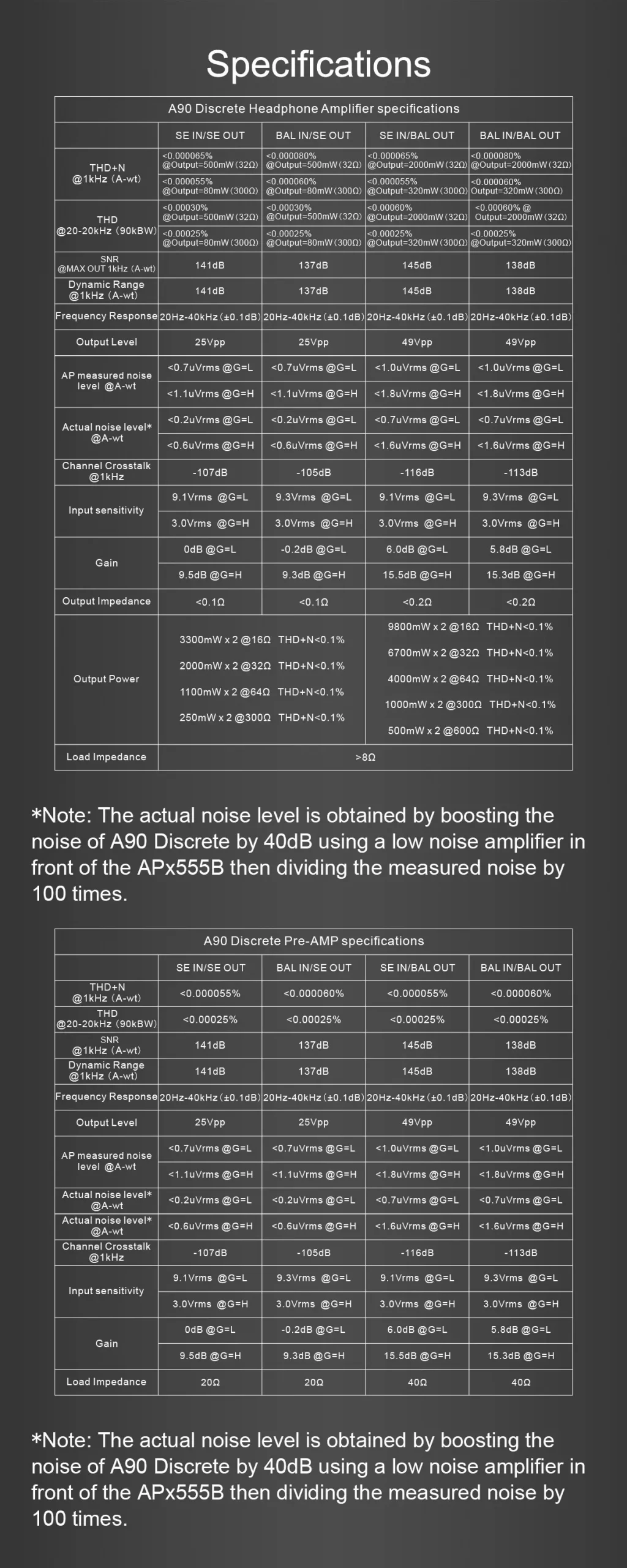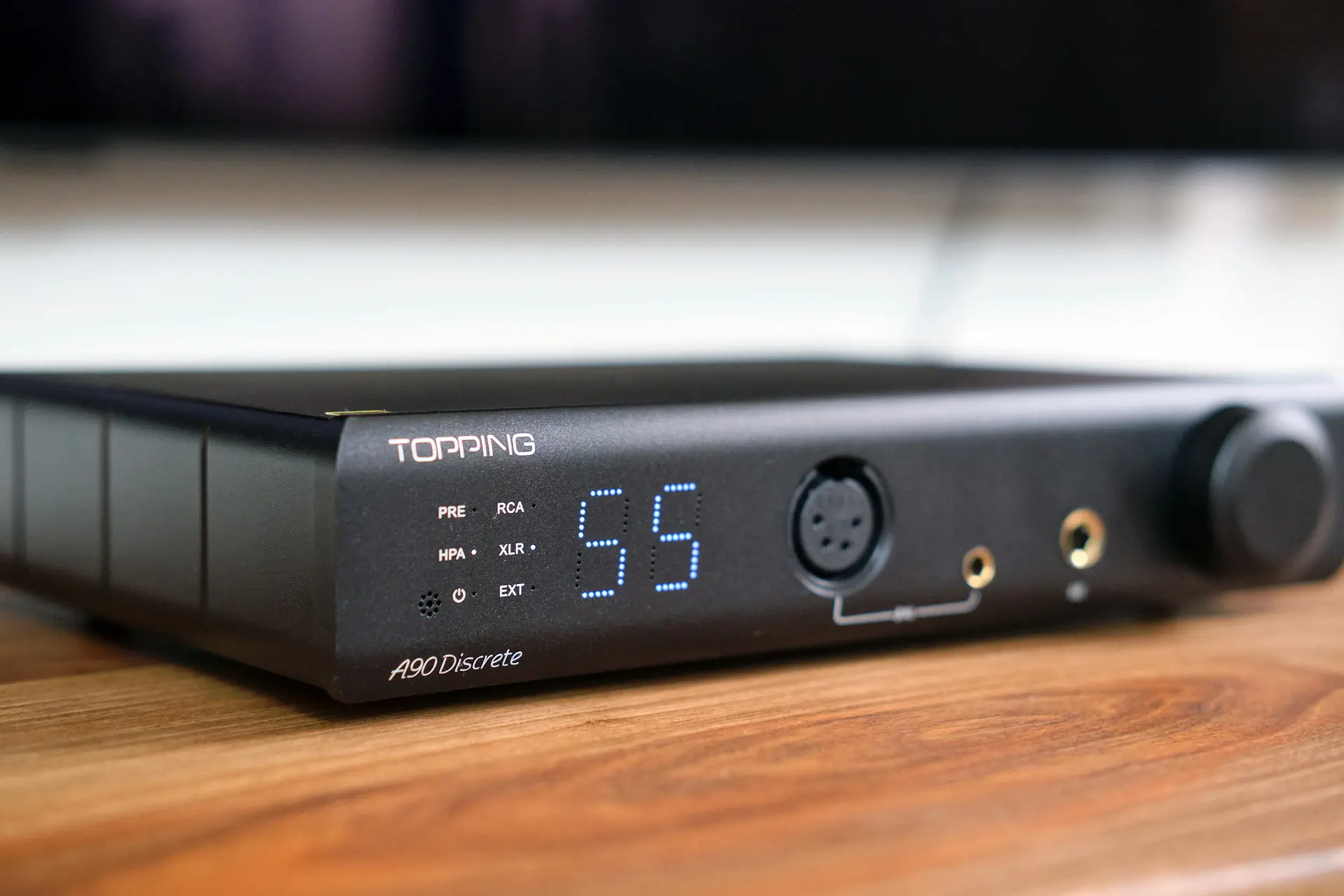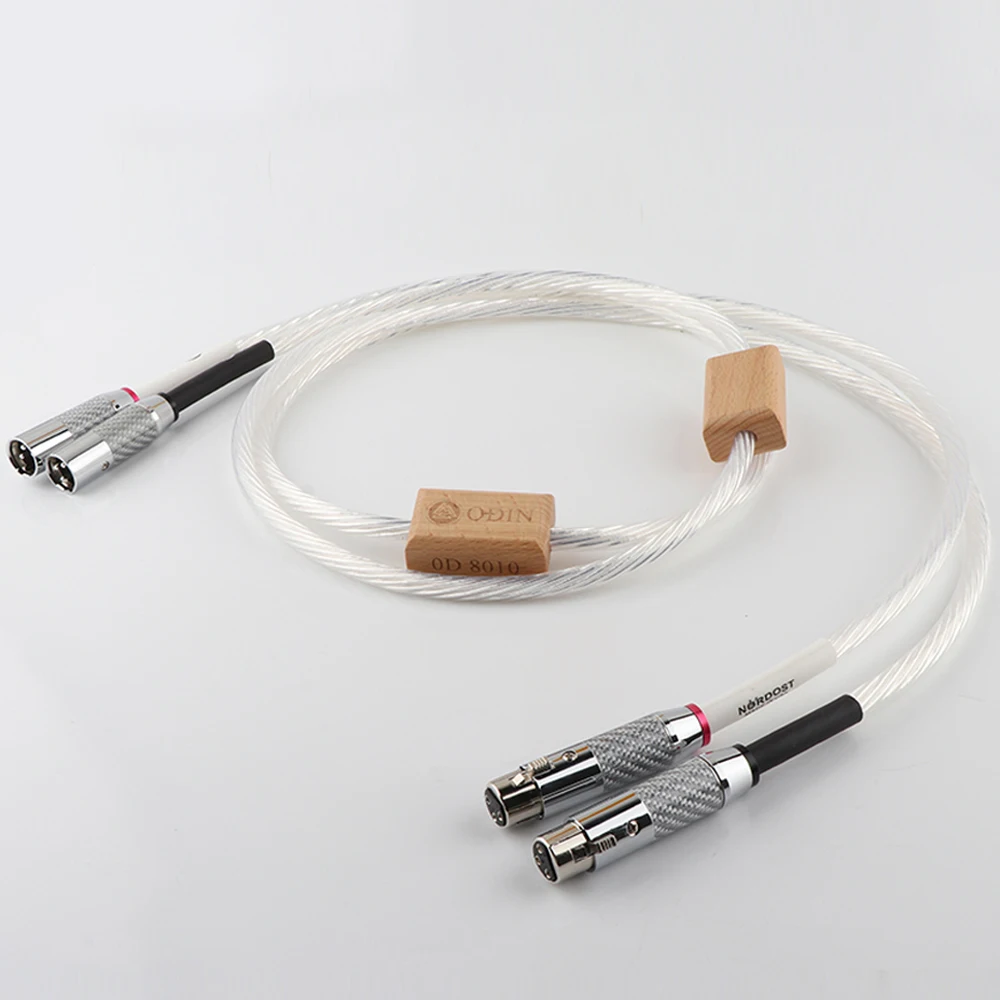Topping A90D is an evolution of the company’s flagship headphone amplifier A90. As such, it matches their flagship DAC D90SE (D90LE) both visually and in terms of performance. But what does this kind of performance mean in reality and what can you expect from the A90D?
Build and Connectivity
As with all Topping products, the A90D is built like a tank and I wouldn’t expect anything less from their flagship. The whole body is made of thick aluminium with a sturdy feel to it. Regarding connectivity, there’s a lot of versatility with the A90D. Starting with the back of the unit, we find both single-ended RCA inputs and balanced XLR ones. Moreover, there are single-ended RCA and balanced XLR pass-through outs so you can pass the signal to another device in the chain (an integrated amp or active speakers for example). This is always a nice and welcome feature. Aside from that, we see an IEC power inlet, meaning that the power supply is located inside the unit and there is no power brick sitting outside of the device, just a good old power cord that goes directly into 110 or 220 Volts depending on your region.
In the front, we find our headphone outs starting with an unbalanced 6.35 mm jack. Next to it, there is a balanced 4.4 mm Pentaconn, and finally, an XLR out that is also balanced of course. As you can see, there’s little if anything left out when it comes to possible ways of connecting Topping A90D to other devices. Add a fantastic build to it and Topping passes this section with flying colors.
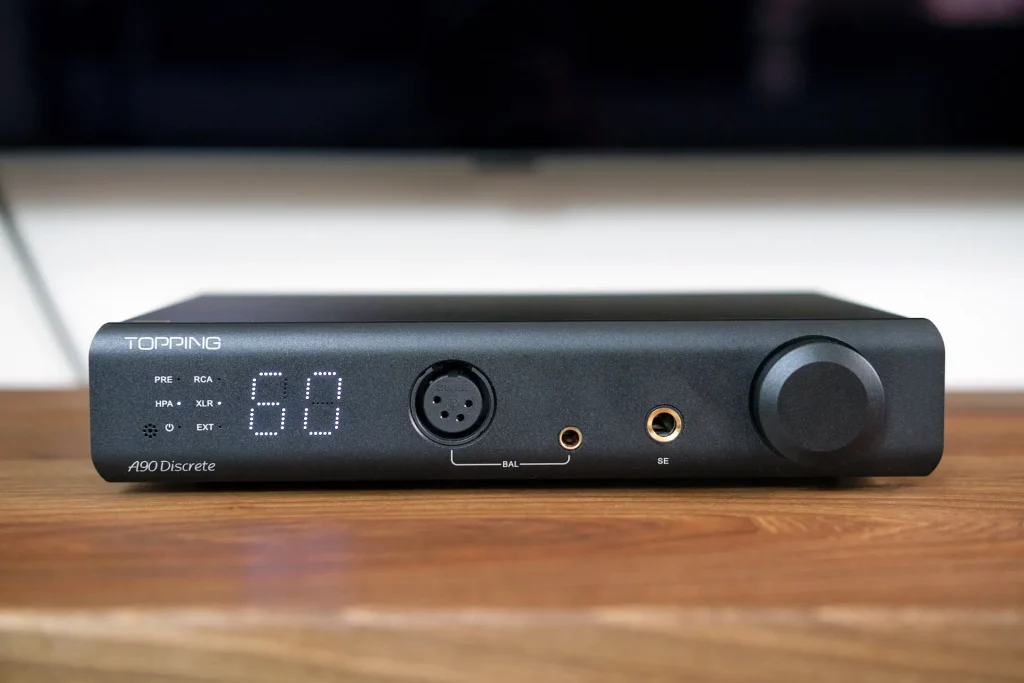
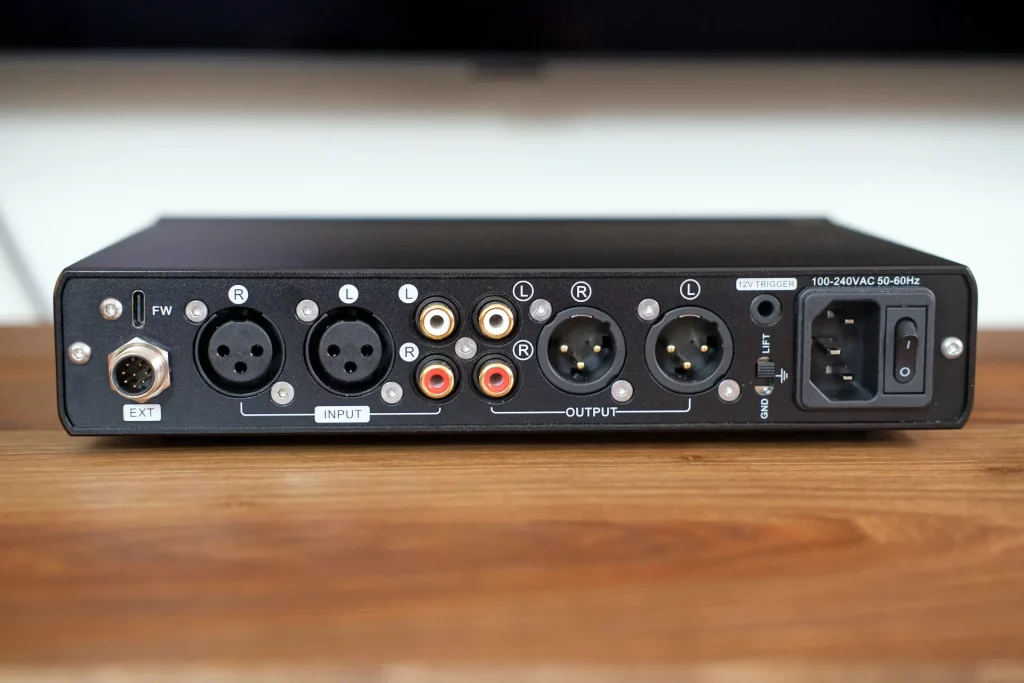
Features and Tech
A90 Discrete has a slightly different panel compared to the regular A90. Instead of physical switches that were located on the left side of the unit, we now have several LED indicators to let us know which input is active and provide the same kind of information about headphone output and pre-out. Right next to it, there’s a group of LEDs forming two digits that make for very visible and in my opinion stylish volume-level information. A completely new thing on a discrete model is using an R2R network for volume control instead of a rotary potentiometer. This technology provides perfect channel matching as you would expect, but there’s more. Another cool thing that Topping was able to do with it is to provide volume-level memory for different outputs and inputs. So each time you switch between those, it automatically switches to the volume that was used last time. I find this function can be very neat.
Inside the unit, Topping used their NFCA circuitry already known for its high power and low distortion. This time around it was made by using discrete electronic parts instead of chips. Topping brags about extremely high power output that goes all the way up to 2 x 9800 mW in its peak. Paired with high voltages up to 49 Vpp, and two gain levels, this amp will drive almost any headphones on the market without a fuss, from small and sensitive IEMs to big and voltage-hungry high-impedance headphones. Distortion and noise measurements are next to perfect as with most Topping products, but as usual, I’ll not be focusing on these numbers but on the real sound quality and worth of this product. For tech spec lovers, there’s a long spec sheet at the end of the review waiting for you.
Sound
Right from the start, great power handling is noticeable as Topping A90D is truly a vigorous performer. The Bass section is deep and punchy, but tightly controlled. Every bass note hits with intent and precision. Mid-bass is the same way, quick and nimble without any trace of warmth or blooming. It doesn’t spill into the midrange either, which is present, open, and rich with details. The highest spectrum is well-extended, quite airy, and revealing. But talking just about tonality won’t paint the whole picture.
Moving to the way A90D handles dynamics and micro-dynamics is very important if you want to know how it really sounds. No matter what type of headphones I hooked to it, and no matter what type of music I listened to – it kept its pace, composure, and control over each and every tone. The leading edges of each note are presented with energy and clarity, while transients are quick and crisp. The inner texture of a tone, for example, a double bass, is also exposed to a satisfying degree. But neither of these will ever sound warm or euphonic. The same goes for the upper registers where the A90D is capable of retrieving plenty of details like texture from a singer’s voice, or a crash of the cymbals. Making any of these notes silky smooth or liquidy is not really this amp’s thing. So it’s safe to say that Topping A90D is a forceful and strident-sounding amp.
When it comes to the soundstage, it’s where A90D really shows its flagship status compared to more affordable Toppings. The space that the soundstage occupies is wide and airy, with plenty of room for instruments to breathe. The sensation of depth is not as pronounced though. Layering and distinction between each instrument are top-notch. Each instrument is well etched in its own position, with a clear border and space dividing it from the next one.
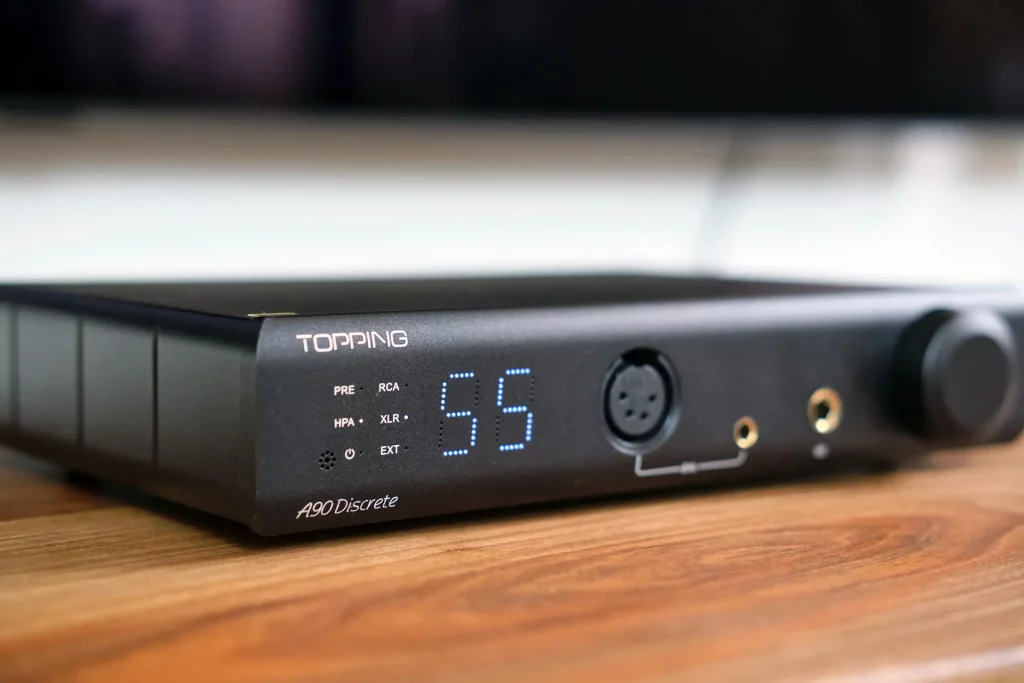
Comparisons
Topping A30 Pro is an older and more affordable model. If you would bother to read the whole review you would find most of the paragraphs simply copy-pasted because these two for sure share that Topping house tonality. However, there are important distinctions too. A90D sounds more open and revealing across the board. Bassline is firmer and controlled better, while high frequencies are airier and create a noticeably bigger soundstage around your head. Going from A30 Pro to A90D felt like an upgrade for sure, but getting used to A90D and then going back to A30 pro felt like an even bigger downgrade.
xDuoo TA-26s is an OTL tube amplifier that sounds very smooth, coherent, and seductive. That said, TA-26s can’t really match the transparency and soundstage width of this pricier Topping. Bassline depth and control are also greater with A90D. The only department in which A90D comes a little short is that smooth and coherent presentation that comes naturally to OTL tube amps, but not as natural to the solid-state ones. Having that in mind, I may imagine that one may prefer TA-26s, especially if vocals, acoustic instruments, and slow tunes are what you listen to the most. But put anything with more bass, dynamics, or simply more instruments in one place… and Topping A90D should easily emerge as a winner.
Conclusion
If you’re looking for a warmer, smoother, and more refined presentation, you’ll probably have to look elsewhere. That said if transparent, revealing, energetic, and pretty neutral sound is something you appreciate, there’s very little to complain about here. Once you add a great build, insane reserves of power, and rich connectivity to the mix, I see Topping A90D as a very successful product that provides a lot to its owners.
